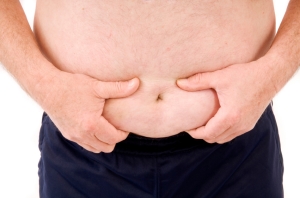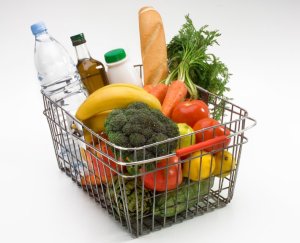 Unless you’ve been living under a rock, you know that Type 2 Diabetes has become one of the major new afflictions affecting people everywhere. We fight diabetes, there are diabetes walks every weekend, we search high and low for a cure to this pernicious demon.
Unless you’ve been living under a rock, you know that Type 2 Diabetes has become one of the major new afflictions affecting people everywhere. We fight diabetes, there are diabetes walks every weekend, we search high and low for a cure to this pernicious demon.
But what are we really fighting? What is this so-called disease that has taken so many peoples’ lives and affected countless others?
Answer: We’re fighting ourselves. Type 2 Diabetes is a modern, “Western,” unnecessary “disease” that we as human beings have brought upon ourselves. That’s the bad part. The good part is that, since we’ve brought it upon ourselves, we can also banish it just as easily. Let me explain…
What is Diabetes?
Diabetes is a group of related diseases in which the body either doesn’t produce enough insulin or the body’s cells become resistant to insulin. The consequence of either state is high blood sugar, due to excess glucose in the blood that isn’t delivered to the body’s cells. So what does all of this mean, in English? Our bodies use food for energy. When we eat, our bodies break down food into glucose, which is a simple sugar that our cells use for energy. However, by itself, glucose is useless. It needs a method of transportation to get to the cells. The method of transportation is a hormone called insulin. Insulin is produced naturally in our pancreas and hooks up with glucose in the blood stream to deliver glucose safely to our cells. The cells are then able to use the glucose for energy. And when cells have no fuel, things really start to go downhill.
Type I Diabetes is a natural condition (usually inherited) in which the body’s immune system attacks the pancreas’ insulin-producing cells. The result is that the body doesn’t produce insulin and, consequently, the body’s cells don’t receive energy and there is an overwhelming amount of glucose floating around in the bloodstream. The solution is constant blood sugar monitoring and daily manual insulin injections. This is usually a lifelong affliction and usually happens during childhood, which is why Type I is also known as juvenile or child-onset diabetes.
Type II Diabetes, on the other hand, is not a natural condition, but rather one that we bring upon ourselves as a result of atrocious diets, lack of exercise, and overall unhealthy lifestyles. Here’s what happens: We eat way too much food and way too many refined carbohydrates. These refined carbs are immediately converted to glucose in our blood. The glucose calls upon the pancreas to produce a lot of insulin to carry all of that glucose to the cells. Together, the insulin and the glucose travel to the cells and completely overwhelm the cells with their volume. This isn’t horrible in isolation, but when it becomes the body’s default way of operating, that’s when we get into trouble. We do this too many times to our pancreas and eventually the pancreas becomes so overwhelmed that it either stops producing insulin or gets so beat up that it can only produce small amounts of insulin. At the same time, the cells are sick of getting bombarded with so much glucose and insulin that the cells themselves become resistant to it (insulin-resistance). Type II represents 90% of all diabetes cases. Type II used to be called adult-onset diabetes because it was more common for adults to get in middle age, due to poor diet and sedentary lifestyles. However, sadly, it’s no longer known as adult-onset because now our children are so fat and unhealthy that they now bring Type II diabetes upon themselves at a very young age.
Realize that the current rates of diabetes are unprecedented in human history. Currently, one in ten Americans has diabetes. A new CDC Study notes that in 2050, one in three will have diabetes if we continue on the current trajectory of unhealthy eating and not taking care of ourselves.
What’s astonishing is that Type II diabetes is (almost) completely avoidable! We have the power to change this. This is why I don’t have sympathy for people with Type II (except young kids who don’t yet know better). It’s also why I’ll never participate in an event to raise money to find a “cure” for Type II. Guess what? I already know a cure – take care of yourself and stop being such a fat slob.
I should wrap this post up before I get too fired up. But the reason I get fired up is that I want to help people live healthier lives so they avoid this “non-reversible” affliction. So in my follow-up post tomorrow, I’ll tell you how, not to fight diabetes, but to avoid diabetes. Big difference.



